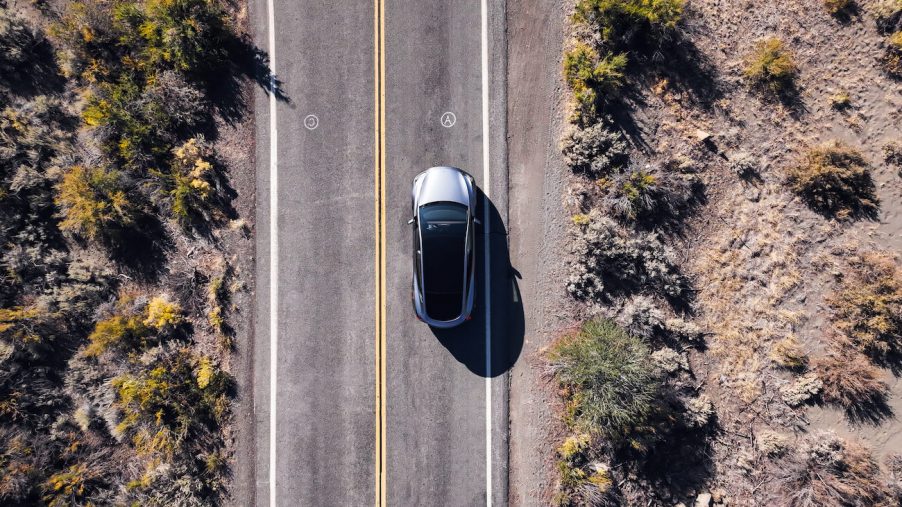
Is Having an EV Worth It?
Even after tax credits, cheaper maintenance costs, and lower energy costs, driving an entry-level EV will cost just a bit more than an entry-level ICE car. That said, the overall costs of each option are shockingly close. Besides a high upfront cost and greater EV depreciation, one major obstacle to going electric is simply the amount of misinformation. So here are some of your electric vehicle FAQs finally cleared up.
How Long Do EVs Last?
Electric vehicles have fewer moving parts than ICEs and should theoretically last longer. However, swapping in new batteries periodically (every 200k miles, according to EV Connect) may offset some of these savings.

A future EV could potentially have fewer moving parts than any vehicle currently on the road. An automaker could someday make EVS that will remain reliable for decades. But the current EVs are models that may have been rushed to market or are early products by an inexperienced startup. We hope the future holds EVs engineered to last longer than any vehicle in history, thus driving the cost per mile down. But the current industry is still struggling with problems such as Tesla infotainment screens engineered to fail.
How Do I Charge at Home?
Your best option is to have an electrician install a charger in your driveway or garage. Your power company may offer you a free EV charger. But read the fine print: this deal often comes with the right to shut your charger off during peak usage.

If you are renting your home or out visiting friends, don’t fear. With the correct adapters, you can plug an EV into any outlet. A regular (120-volt) wall outlet will take hours–or even days–to charge up fully. So you may want to order an adapter from your automaker to plug your EV into a 240-volt dryer outlet for faster charging.
How Hard Is It to Use a Public Charger?
Some public charging networks let you just plug in and swipe a card. Others require you to download their app and get a membership. To be blunt, the public charging network is a mess, but with billions in recent government grants, we expect the landscape to be completely different within two years.

The largest public charging network in 2024 (besides Tesla’s supercharger network) when it comes to modern DC fast chargers, may end up being EVGo. But sadly, recent studies have found customers the most unsatisified with EV Go.
J.D. Power’s yearly study found that even though the number of charges is increasing, drivers are less satisfied than last year. And charging network dissatisfaction may be one of the main reasons 20% of early EV adopters return to ICE. Again, the landscape is changing–and improving–rapidly. But in the short term, it would be wise to download an app like PlugShare to study the public charger network in your neighborhood and along road trips you take often–before investing in an EV.
Does It Cost a Lot to Charge an EV?
Charging an EV at home may cost as little as $5 for a full battery top-off. But doing it at a public charger could cost you four times as much. Cost depends on your location and charger, but is almost always cheaper than running an ICE car.
AutoWeek looked at national electricity costs and kWh per mile, then estimated how much it would cost to run various EVs for 45,000 miles. The energy cost for a Mini Cooper EV would be about $1,939. A Kona Electric could come in closer to $1,723. How does that compare to an ICE Mini Cooper or Hyundai Kona? Going for the Mini EV instead of ICE would save you about $2,539 over 45,000 miles. Choosing the Hyundai EV saves you $1,900 over 45,000 miles.
Are EVs Expensive to Maintain?
Electric Vehicles require less maintenance than ICEs and are cheaper to maintain. In fact, you may pay 33% less per mile to drive an EV for its first 45,000 miles than you would for a comparable ICE.
Let’s return to the Mini Cooper EV vs ICE. The electric Mini should run you about $0.066/mile in maintenance costs for its first 45,000 miles. You can expect to pay closer to $0.0853/mile for its ICE sibling. What about the Hyundai Kona? The same number for the ICE version is $0.0909/mile. Go EV, and that drops to $0.066/mile.
Battery swaps will be an expensive maintenance item if you plan to run an EV for hundreds of thousands of miles. Fear of these swaps may be one of the reasons EVs are depreciating faster than ICEs. But as more EV owners buy batteries, we expect the aftermarket to find ways to drive down the cost of the swap, and even come up with slightly cheaper replacement batteries.
Are EVs Different to Drive?
Yes. EVs will have more torque when accelerating from a standstill than any ICE. They are also often heavier than similar ICEs, so may feel a bit different in corners. But with regenerative braking, they handle their weight gracefully in a straight line.
Honestly, unless you are out drag racing or rally racing, you may be hard-pressed to find major differences in the EV experience. Driving a modern EV may feel very similar to driving your modern ICE.
Next, read about the EVs that actually excel at long road trips, or see more of the pros and cons of living with an EV in the video below:



